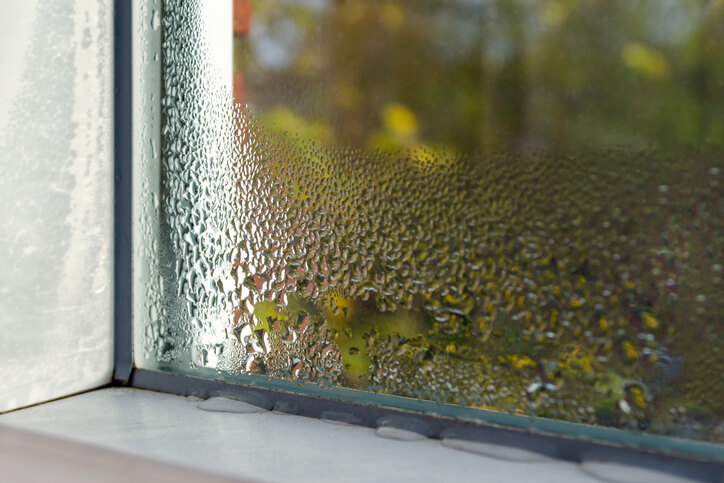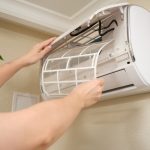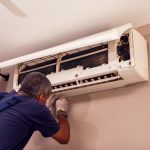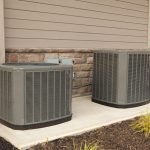
Why Does My House Get Dusty So Fast?
Do you feel your house is always dusty no matter how much you vacuum and clean? Have you tried everything, from air purifiers to frequently washing and brushing your dog, without success? Don’t assume your home is dirty; this dust might not be from simple neglect.
In this article, you will find the answer to the question, “Why does my house get dusty so fast?”.
Popular Reasons Why a House Gets Covered in Dust Quickly
Dust is a mixture of various particles including pollen, dead skin cells, pet dander, mold, bacteria, dust mite droppings, and more. Outdoor air can also contribute to the dust inside your home. Soil, sand, chemicals, and germs can enter through cracks in doors and windows or be brought in on clothing, shoes, and pets.
Although it’s easy to overlook, dusting is an important task. Accumulation of dust on surfaces can make your home appear dirtier and negatively impact air quality and overall health.
Many hidden sources of dust exist in every home, with some of the most common examples listed below.
Dirty Rugs and Carpets
Dirt embedded in carpet and rug fibers is a significant source of household dust. Regular vacuuming can help, but it’s important to use a vacuum with efficient dust-trapping capabilities to avoid recirculating dust back into the living space.
To further reduce carpet dust, encourage household members and guests to remove their shoes at the front door, placing them in an entryway rack or taking them directly to a closet. These practices can significantly reduce dirt in carpets. However, the only way to eliminate this dust source is to replace carpeting with hardwood, laminate, or another dust-resistant type of flooring.
Dusty Upholstery and Draperies
Fabric naturally collects dust, and activities like opening curtains or sitting on a sofa can release this dust into the air. To manage this, vacuum upholstered furniture and thicker window treatments like blackout curtains weekly using your vacuum’s attachments. Additionally, washing or dry cleaning draperies once a year can help reduce the dust trapped in their fabric. If your upholstered furniture tends to gather a lot of dust, consider replacing it with leather or wood pieces, which are easier to keep dust-free.
Pet Dander
The question “Why does my house get dusty so fast?” can also be answered because of pets. Cats and dogs, even those with short hair, shed a significant amount of fur and skin flakes, known as pet dander. This dander can contribute to the dust in your home, especially if you have multiple pets. To manage this, brush your pets weekly or more frequently for long-haired breeds, or have them regularly groomed by a professional. Using a vacuum designed to pick up pet hair at least once a week can also help if your pets shed heavily.
Leaky Windows and Doors
Gaps around windows and doors not only cause energy loss but also allow dust to enter your home whenever the wind blows. This problem can be exacerbated if you live near a dirt or gravel road. Fortunately, the solution is straightforward: applying caulk to window gaps and installing new weatherstripping around doors can significantly reduce the dust that blows in.
High Indoor Humidity
High humidity is a lesser-known cause of a dusty house. Excess humidity causes dust particles to stick together and settle on surfaces rather than staying airborne. Although a humid local climate is largely beyond a homeowner’s control, there are steps you can take to reduce indoor humidity and dust.

Keep doors and windows closed on humid days, and seal any gaps in these areas with caulk. Additionally, consider investing in a dehumidifier to control humidity in particularly humid rooms. For a more comprehensive solution, a whole-house dehumidifier can help minimize moisture throughout your home.
Poor Indoor Air Quality
Many outdoor contaminants find their way indoors, including dust. An air quality monitor can help measure the pollution levels inside your home. If it detects moderate to high levels of pollutants, dust is likely among them.
Fortunately, using an air purifier can reduce airborne dust. Air purifiers with carbon and HEPA filters trap dust and other particles, keeping them off surfaces and out of your lungs.
Unsealed Air Ducts
Another reason why your house gets dusty so fast is leaky HVAC ducts. HVAC ducts run through ceilings, walls, attics, and crawl spaces, and any holes or unsealed connections in the ductwork can allow dust to be drawn in and then blown into your living space. If you’ve addressed other dust sources but still find your home dusty, leaky air ducts might be the issue.
If you notice increased dust on furniture and flooring after using the furnace or air conditioner, it may be time to call an HVAC technician. They can perform a pressure test on the duct system, identify leaks, and repair them.
Low-Quality or Dirty HVAC Filters
Your HVAC filters are your first line of defense against dust, but not all filters are equally effective. Low-quality filters have larger holes that allow dust to pass through and circulate back into your home through the supply vents.
Remember, even high-quality filters can become clogged with dust and need to be replaced. Replace your air filters at least every three months or when they appear visibly saturated.
HVAC System Malfunction
If your house gets dusty so fast, it could be because your HVAC system is not capturing the dust properly. Fine dust accumulates on the surfaces of air ducts, vents, motors, and coils within your HVAC system. This dust attracts flakes of dead skin, hair, and pet dander, leading over time to the formation of a dense mat where bacteria, mold, dust mites, and allergens thrive.
While air filters effectively capture most of these contaminants from the air, certain parts of the HVAC system remain susceptible to their buildup. That’s why it’s important to have regular inspections to check the condition of your air ducts to see if they could use air duct cleaning services.
Why Does My House Get Dusty So Fast and What Can I Do About It?
Change the Air Filters Regularly
Ideally, you should replace your filters every 2 to 4 months. If your home appears excessively dusty, changing your HVAC filter can make a significant difference. Interestingly, much of the dusting process involves redistributing dust back into the air. Additionally, if you reside in a hot, dry climate, you likely experience a considerable amount of dust entering your home from outside.
Your filters combat both these issues: as air passes through them, things like dust or pet dander get caught and stay put. However, if the filters are clogged with dirt, air won’t flow through properly, causing dust to deflect and settle elsewhere in the house instead.
Invest in quality filters; you can get a recommendation on brands from a trusted HVAC contractor. Regularly replace your filters, keep up with routine maintenance, and ensure you’re not cutting corners on filter changes.
Keep Your Ducts in Check
Leaky ducts can also cause real trouble. When there are leaks in your ducts, it not only makes your system less efficient and more strained, but it also permits air to escape and enter the system without being filtered. It’s like running water through a hose with a bunch of holes in it – it’s not going to work very well. This creates an ideal situation for spreading dust throughout the home, as it draws dust from one location (inside or outside the house) and redistributes it elsewhere.
Check the vent covers in your home: if they appear to have lint or debris, your ducts could be causing the issue. Sealing up those ducts and giving them a good cleaning will fix these issues. You’ll probably notice less dust, and you’ll also see a boost in performance – and possibly a drop in your utility bill!
Make Sure the Air Coming in is Clean
Making sure the outside air that comes into your home is clean is a good step toward eliminating dust. Our air-purifying technology blasts even the smallest debris from the incoming air, resulting in clean and fresh air in your home. Humidity plays a role in managing dust levels as well.
Dry air tends to increase dust accumulation (and conversely, dusty conditions often indicate dry air), underscoring the importance of maintaining balanced humidity levels in your home. If your air is too dry, it can be a sign of HVAC issues present or on the way.
Several other factors can contribute to dust buildup in your home. If you’re experiencing these issues, consider contacting an HVAC specialist. For assistance, reach out to McMillin Air at 623-432-5202! A manager will answer the question of why your house gets dusty so fast, as well as other questions you may have.
We’ll take your specific situation into account and help you make your home low-dust and low-maintenance.








0 comments